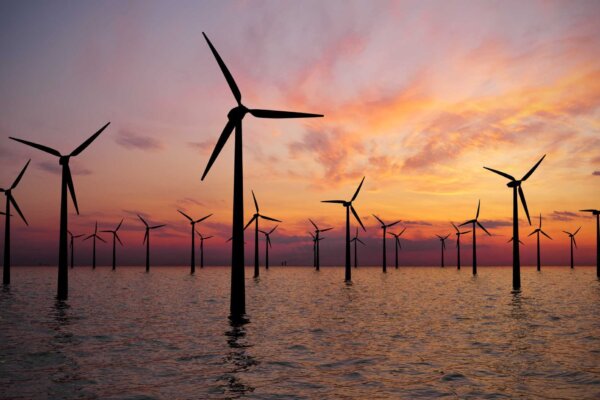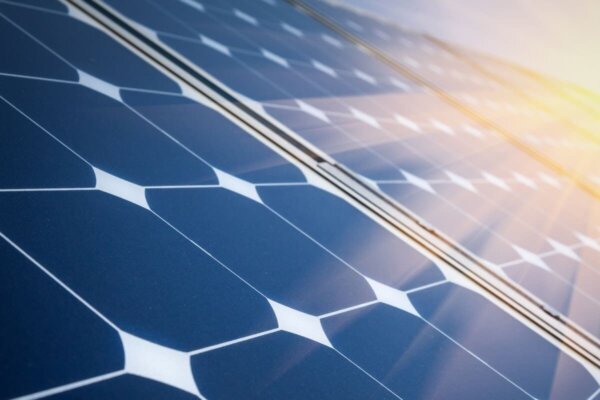With the new UK Government in office for the past month, August’s edition of Bryt Insight takes a look at actions already being taken on major business energy, net zero and climate-related pledges. We also run through the National Grid Electricity System Operator (ESO)’s Future Energy Scenarios report, which explores different pathways for the UK to reach net zero by 2050. Here’s what you need to know this month:
Bryt Energy Market Update
REGO Prices
National Grid ESO launches 2024 Future Energy Scenarios
New Government moves on energy and climate pledges
Public Sector receives decarbonisation funding
Spotlight on renewables
News in brief
Spotlight on Statkraft
Bryt Energy Market Update
July has been a month of two halves. Wholesale electricity prices fell sharply at the start of July before continuing to fall at a more gradual rate. But despite this movement, by the end of July, prices were again similar to those at the start of the month. Here’s a more detailed look at what you need to know:
- Early July: increased renewable energy generation and lower electricity prices
Wind generation in the first half of the month was quite erratic, with production exceeding 13GW at one point and dropping below 2GW a couple of times. However, on average, wind generation was 30% higher than the latter half of June.
European renewable generation also increased at the start of the month, removing the need for more expensive thermal generation on the grid (such as coal and gas). Along with the French Nuclear fleet starting to return from maintenance, this all helped drive down European prices and, because of the interconnectivity of the European grids, the UK’s electricity prices down too.
- Late July: reduced renewable energy generation, increased demand, and higher electricity prices
In the second half of the month, renewable generation fell, the Heysham nuclear reactor in Lancashire went offline for maintenance, and the high temperatures in the UK and across Europe increased demand.
Wind generation was almost 40% lower in the second half of the month compared to the start of the month. This, along with the maintenance on the UK nuclear fleet, meant that gas generation had to fill the gaps, increasing electricity prices.
Alongside this, across Europe, high temperatures led to increased electricity demand, with equipment such as air conditioning, fans, and ventilation being more in use. This, combined with warnings in France of potentially having to reduce nuclear generation, due to the increased water temperatures in the rivers used to cool the reactor, caused electricity prices to rise.
After all this movement, the month has ended with wholesale electricity prices back at the same level as they were at the start of the month.
REGO Prices
Like last month, there was very little market activity regarding Renewable Energy Guarantees of Origin (REGO) certificates, with most suppliers wrapping up activity relating to last year’s Fuel Mix reporting compliance period.
National Grid ESO launches 2024 Future Energy Scenarios
National Grid ESO has unveiled its annual Future Energy Scenarios (FES)1 report for this year, which outlines several strategic pathways towards achieving the UK’s net zero target by 2050.
The FES 2024 introduces three potential pathways to reach net zero, emphasising the urgent need for action within the next two years to establish a fair, affordable, sustainable and secure energy system by 2050. Alongside these pathways, the report outlines a “Counterfactual” scenario that illustrates the consequences of delayed action. The pathways are:
- Holistic transition: Achieving net zero through a balanced approach combining electrification and low carbon hydrogen. This pathway relies on a strong level of consumer engagement, with both smart homes and EVs providing flexibility to the grid during periods of high demand, as well as high renewable energy capacity and reduced unabated gas – i.e. generated without carbon capture, utilisation and storage (CCUS) – use after 2036.
- Electric engagement: Focused primarily on electrification – meaning electricity would supply the majority of energy demand for industry, residential and transport. This pathway relies on consumer engagement with the adoption of smart technologies such as heat pumps and EVs. The UK’s supply would require substantial renewable energy and nuclear capacity.
- Hydrogen evolution: Focusing on rapid development of low carbon hydrogen – a sustainable alternative to fossil fuel gas, which can help decarbonise sectors that cannot be electrified and meet net zero targets. Hydrogen power plants would be required to drive supply.
- A counterfactual pathway highlights the risks of missing net zero due to insufficient progress and reliance on fossil fuels.
The FES 2024 outlines eight critical actions to achieve net zero, which underpin all three pathways above, including:
- Accelerating the delivery of electricity grid infrastructure to achieve a net zero power system.
- Reform electricity, gas, hydrogen and carbon markets to ensure they provide for and work with a reliable energy system.
- Prioritising low carbon hydrogen for hard-to-electrify applications.
- Promoting low carbon heating technologies, such as through a faster roll out of heat pumps.
- Driving innovation and consumer trust in smart technologies, such as smart EV chargers, to enable users to realise cost savings while helping manage the electricity system.
- Enhancing energy efficiency in all sectors.
- Reforming the grid connection processes (and connecting long-duration energy storage) to combat delays facing renewable energy projects getting on to the network.
- Investing in developing supply chains and skills needed to reach net zero.
The report also sets out key milestones to achieving decarbonisation targets, such as reinstating the ban on petrol and diesel vehicles by 2035, ramping up heat pump installations by 2030, and reducing gas consumption by up to 40% by 2040. These milestones vary slightly based on each pathway. You can download the full-length FES 2024 report here.
Electricity demand set to grow and quicker net zero action needed, says International Energy Agency Meanwhile, the International Energy Agency (IEA) confirms the need to speed up action on net zero in its Mid-Year Update2. The report says global electricity demand is expected to grow 4% in 2024. This marks the highest increase in five years and is driven by factors such as global economic growth and adoption of tech such as EVs.
Along with an increase in electricity demand, this year, for the first time, renewable energy sources are expected to surpass coal in electricity generation, with renewables increasing their global share to 35% of total output by 2025. Solar PV and wind energy will meet a significant portion of this demand growth, with solar alone accounting for nearly half of the increase.
Echoing the urgency expressed in the National Grid ESO’s FES report, the IEA’s Director of Energy Markets and Security, Keisuke Sadamori, said “clean energy’s rising share of the electricity mix” needed to happen “at a much faster rate” to meet international climate goals3. You can read the IEA’s mid-year update here.
New Government moves on energy and climate pledges
It’s been a busy first month as the UK’s new Government begins to turn pledges into actions. In last month’s edition of Bryt Insight, we highlighted some of Labour’s major energy-related manifesto commitments. A month later, here is a summary of what’s happened so far:
King’s Speech confirms climate commitments: The King’s Speech on 17th July confirmed the Government’s commitment to a ‘clean energy’ transition4. This includes over 35 bills focusing on the economic benefits from climate policies. The King’s Speech promised legislation would be introduced to promote energy independence and attract investment in the UK’s energy infrastructure. A bill supporting sustainable aviation fuel production was also announced5.
Great British Energy: A key component is the establishment of Great British Energy, a publicly owned renewable energy company6. It aims to accelerate renewable energy investment, focusing on technologies such as wind turbines. Great British Energy says it will invest in small and medium-sized renewable projects and work with local communities to develop them as part of a Local Power Plan7. Additionally, the company has announced its first major partnership with The Crown Estate, which aims to attract up to £60 billion in private investment for offshore wind developments, potentially reaching 20–30GW of capacity by 20308.
Onshore wind development: The Government lifted the effective ban on onshore wind farms, removing restrictive footnotes from the National Planning Policy Framework9. This allows onshore wind projects to be developed on equal footing with other infrastructure projects.
Other key actions and initiatives include:
National Wealth Fund: The Government has allocated £7.3 billion to the National Wealth Fund to support British businesses and jobs in renewable energy-related industries10. This fund includes £1 billion for CCS (carbon capture and storage) deployment and £500 million for green hydrogen manufacturing.
Solar energy development: Development consent orders have been granted for three major solar farms, totalling over 1.3GW of capacity11. A Solar Taskforce has been reactivated to achieve 50GW solar capacity by 2030. Additionally, the new Secretary of State for Energy Security and Net Zero (DESNZ), Ed Miliband, has addressed misconceptions about solar farms affecting food security, confirming that solar, for example, took up just 0.1% of UK land in 202212.
Climate Change Committee’s Progress Report to Parliament
And with the election period now over, the Climate Change Committee (CCC) has released its delayed annual report for 202413. The report highlights the urgent need for the UK to realign its strategy to meet the 2030 emissions reduction target, focusing on decarbonising buildings, transport and agriculture.
The CCC acknowledges the UK’s previous success to date in cutting emissions, but warns that progress has slowed. To achieve the 2030 target of a 68% reduction compared to 1990 levels, the CCC has outlined 13 priority actions. These include reversing policy rollbacks by the previous Government on initiatives such as phasing out gas boilers. Similar to National Grid ESO’s above suggestions, the report also advises streamlining planning to speed up the roll out of technologies such as heat pumps, onshore wind and EV charging points. Additionally, it recommends decarbonising public buildings and publishing a strategy for developing the net zero skills required for jobs related to the energy transition. The CCC also warns that rates of offshore wind installations, homes adopting heat pumps and the market share of new EVs need to “significantly ramp up”. You can read the progress report here.
Public Sector receives decarbonisation funding
The Department for Energy Security and Net Zero (DESNZ) has announced the latest successful grant recipients from Phase 2 of the Public Sector Decarbonisation Scheme14. A number of initiatives in the North East and Yorkshire and the Humber have received funding aimed at reducing carbon emissions and enhancing energy efficiency. This includes grants to replace gas boilers with heat pumps in university buildings and primary schools across the two areas, to help cut carbon footprints.
If you’re an eligible organisation interested in applying for the next round of funding, details for Phase 4 of the scheme will be available in the summer. To learn more about the Public Sector Decarbonisation Scheme and future funding opportunities, please visit the Government’s website.
Spotlight on renewables
This month we’re sharing some encouraging news for UK renewables that show the country’s electricity mix is heading in the right direction to support the transition to net zero.
- Renewables power nearly half of the UK’s electricity mix in Q2 2024
Renewables provided 47% of the UK’s total power generation in the second quarter of 2024, according to a report from energy data analyst Montel Analytics15. This growth was primarily driven by wind (17.2 terawatt-hours), with solar power reaching its highest level for any recent quarter at 5.1TWh. You can download the report here.
- UK surpasses 16GW of installed solar capacity
New DESNZ statistics reveal the UK surpassed 16GW of installed solar capacity in 202316. Figures also show that 647MW of capacity was added in the first half of 2024. In May alone, there were 16,333 new installations, accounting for 69MW of capacity, which is the highest figure so far this year. While these figures are subject to future revision, they remain significantly higher than the average figures observed between 2016 and 2021.
- Record £1.5 billion confirmed for renewables auction round
The UK Government has announced a £1.5 billion budget for the upcoming Contracts for Difference (CfD) auction round (known as allocation round 6 (AR6))17. Contracts for Difference auctions support investment into renewable electricity by guaranteeing a price per unit of electricity generated and this latest auction provided a record budget, representing a significant and encouraging increase in investments into renewable projects.
News in brief
- A new report suggests that accelerating net zero policies could boost the UK economy by £765 billion by 205018. This transition could create up to 309,000 jobs annually and generate an additional 1.3% of economic growth each year. You can read the report here.
- Meanwhile the “green economy” is also thriving at a global level. A London Stock Exchange Group report shows the global green economy is now valued at $7.2 trillion and has been the second-best performing industry over the last decade19. Read the report here.
Spotlight on Statkraft
As part of the Statkraft Group, we’re sharing a few of their key updates this month, this time highlighting new Power Purchase Agreements (PPAs) signed by the company.
PPAs are long-term energy purchasing agreements between an electricity consumer or supplier and a renewable energy generator. They can provide longer-term prices and budget certainty for a customer, whilst supporting renewable projects by guaranteeing revenue for the generator and project.
The latest agreements include:
- A fixed-price Power Purchase Agreement (PPA) with Boralex for the 106MW Limekiln Wind Farm in the Scottish Highlands20. The wind farm, set to be commissioned by the end of 2024, will generate enough renewable energy to power the equivalent of approximately 100,000 homes. Learn more about the project, here.
- A 10-year PPA and Optimisation Agreement with international investor FP Lux Group for the Scurf Dyke Solar Farm and an 8 MW Battery Energy Storage System in Yorkshire21. Find out more here.
- A seven-year PPA with Luminous Energy for the 5MW Bracon Ash Solar Farm in Norfolk22. See more about this innovative PPA approach here.
TALK TO OUR TEAM
If you have any questions on how any of the updates might affect your business, our team of experts is on hand to answer them. You can get in touch with us on 0330 053 8620 or at heretohelp@brytenergy.co.uk.
Sources
- https://www.nationalgrideso.com/future-energy/future-energy-scenarios-fes
- https://www.iea.org/reports/electricity-mid-year-update-july-2024
- https://www.iea.org/news/global-electricity-demand-set-to-rise-strongly-this-year-and-next-reflecting-its-expanding-role-in-energy-systems-around-the-world
- https://www.gov.uk/government/speeches/the-kings-speech-2024
- https://www.gov.uk/government/speeches/the-kings-speech-2024#:~:text=Legislation%20will%20be%20brought%20forward,Revenue%20Support%20Mechanism
- https://www.gov.uk/government/publications/introducing-great-british-energy
- https://www.gov.uk/government/publications/introducing-great-british-energy/great-british-energy-founding-statement#:~:text=Through%20partnering%20with%20and%20providing,GW%20of%20cheaper%2C%20cleaner%20power
- https://www.gov.uk/government/news/new-great-british-energy-partnership-launched-to-turbocharge-energy-independence
- https://www.gov.uk/government/publications/policy-statement-on-onshore-wind/policy-statement-on-onshore-wind
- https://www.gov.uk/government/news/boost-for-new-national-wealth-fund-to-unlock-private-investment
- https://www.solarpowerportal.co.uk/labour-government-grants-dcos-three-solar-nsips/
- https://solarenergyuk.org/news/miliband-slams-food-security-fearmongering
- https://www.theccc.org.uk/publication/progress-in-reducing-emissions-2024-report-to-parliament/
- https://www.gov.uk/government/publications/public-sector-decarbonisation-scheme-phase-2-closed-to-applications
- https://www.edie.net/report-renewables-power-nearly-half-of-great-britains-electricity-mix-in-q2-2024/
- https://www.gov.uk/government/statistics/solar-photovoltaics-deployment
- https://www.gov.uk/government/news/record-breaking-funding-for-clean-energy-in-britain
- https://www.oxera.com/insights/agenda/topics/growthzero/
- https://www.lseg.com/en/insights/investing-green-economy-2024-growing-fractured-landscape
- https://www.statkraft.co.uk/newsroom/2024/statkraft-signs-fixed-price-ppa-with-boralex/
- https://www.statkraft.co.uk/newsroom/2024/statkraft-signs-first-ppa-with-recap-for-80-mwp-yorkshire-solar-farm-and-8mw-battery/
- https://www.statkraft.co.uk/newsroom/2024/statkraft-signs-first-of-a-kind-solar-ppa-with-luminous-energy/


